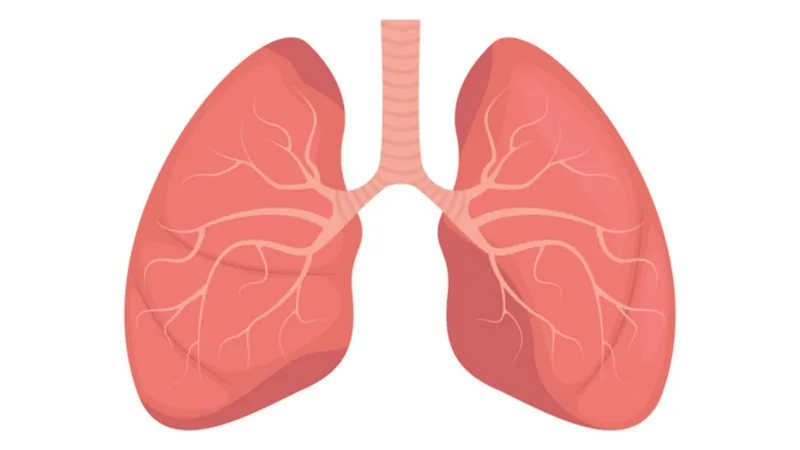Lungs
Our lungs transfer ambient oxygen into the bloodstream while transferring out carbon dioxide. The airflow generated by our lungs also allows for speech as it passes through our vocal cords. Lung tissue is very pliant and is expanded and contracted primarily by the diaphragm muscle. The lungs also contain a tremendous amount of surface area (approximately the size of a tennis court) in order to maximize the transfer of oxygen and carbon dioxide. The respiratory tract begins with the trachea, dividing into smaller and smaller bronchi and bronchioles, much in the same way our blood vessels branch into capillaries. The bronchioles end at spherical alveoli, which interface with capillaries. Additionally, the lung is contained within an inner and outer membrane known as the pleural sac.
Several changes occur to the lungs as we age: the lung tissue becomes less pliant, alveoli lose their integrity, and the diaphragm weakens. While smoking and exposure to certain chemicals greatly increases your risk of lung cancer, age is the primary risk factor for the disease. Older individuals are also much more susceptible to, and much less likely to recover from, infections such as influenza and pneumonia. Chronic obstructive pulmonary disease, which includes bronchitis and emphysema, and pulmonary fibrosis are typically only seen in people over the age of 40, although it’s not clear how much aging mechanisms contribute to these diseases compared to long-term exposure to irritants such as cigarette smoke. Pulmonary embolisms cut off blood supply to the lungs and occur much more frequently with old age. Lastly, the lungs are susceptible to a number of non-age-related ailments, including congenital disorders, traumas (collapsed lung, lung contusion), and asthma.

